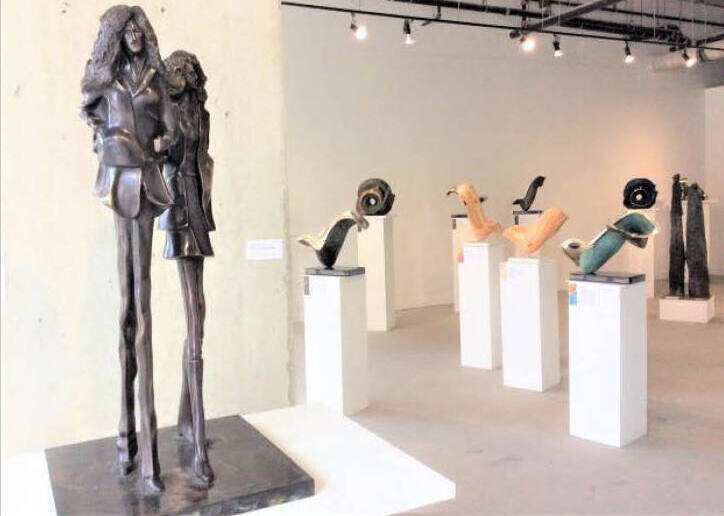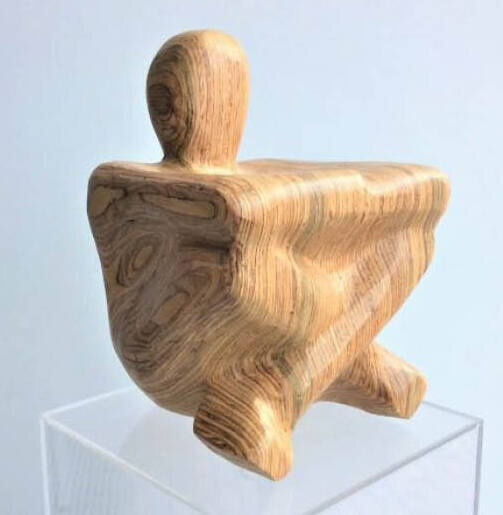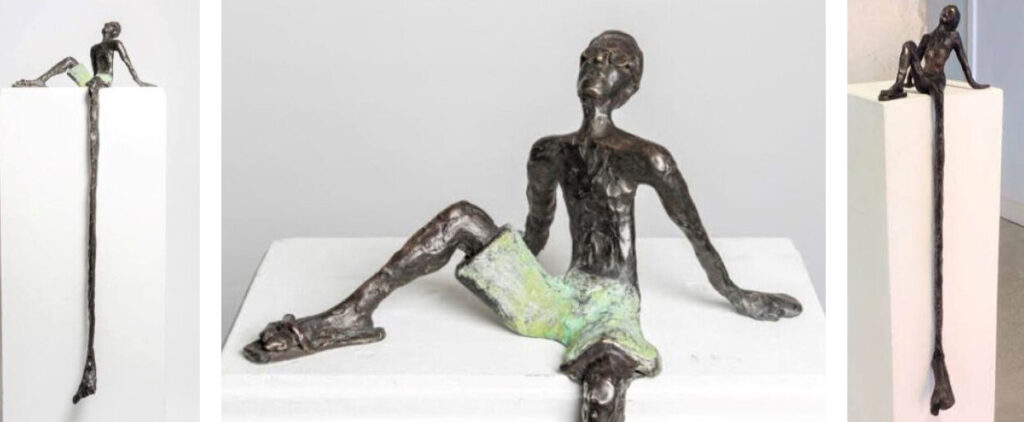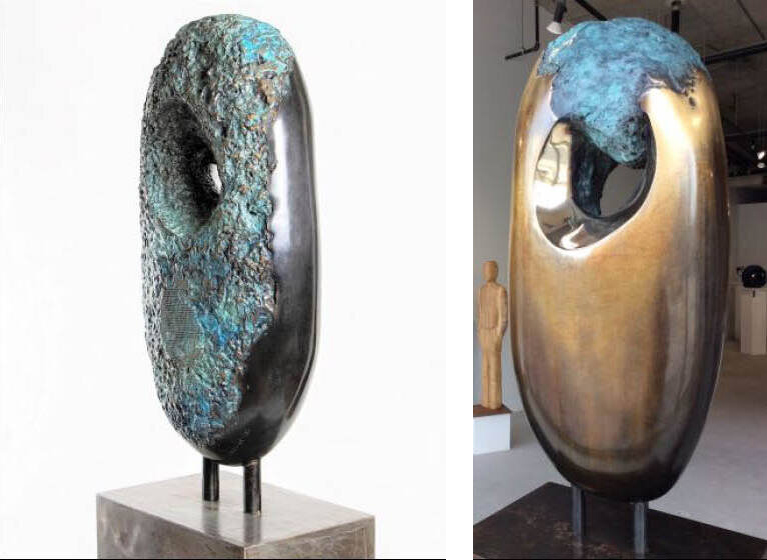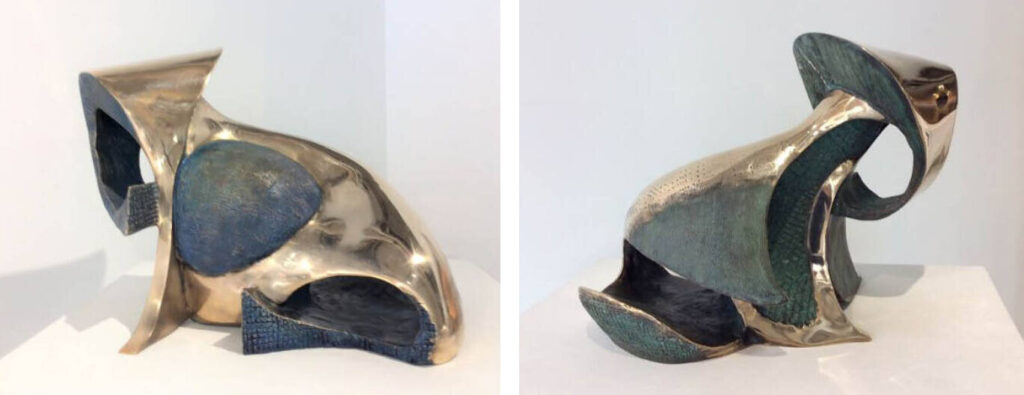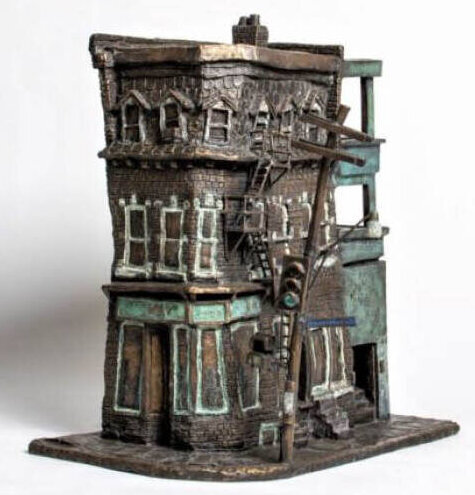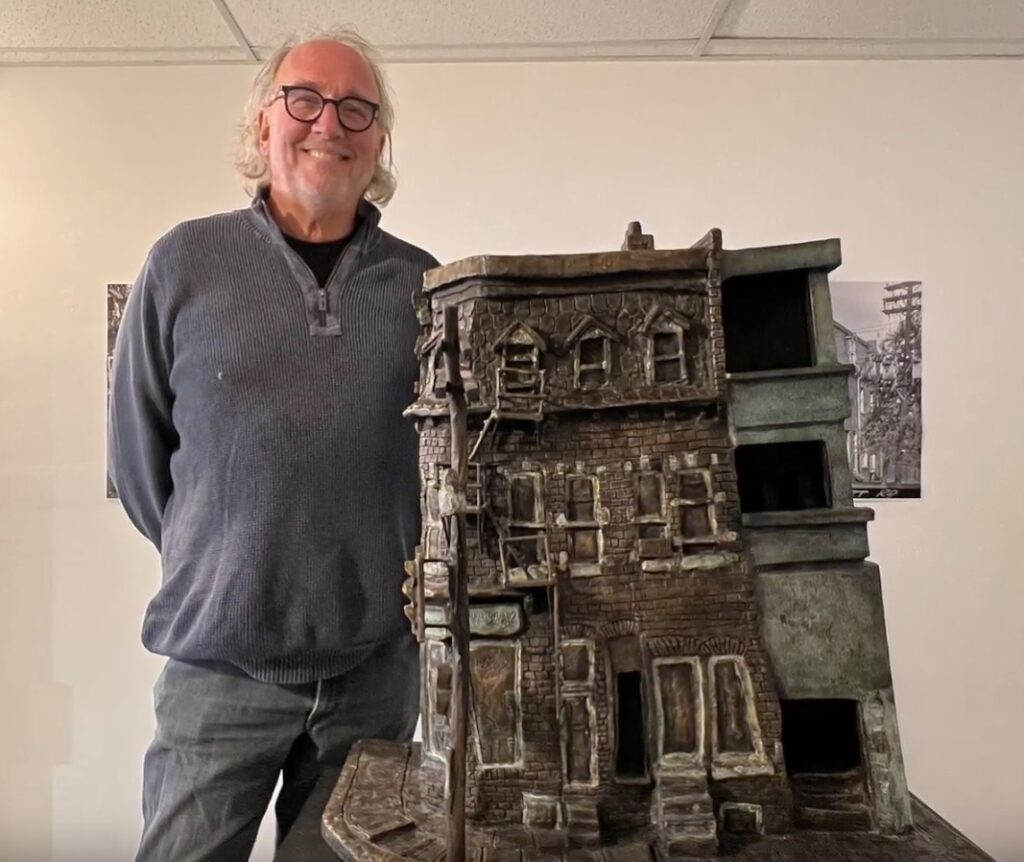John Clinton’s solo show, Found Objects. Found Moments, is not only a celebration of Clinton’s art, but a real occasion at the Canadian Sculpture Centre where we usually see group exhibitions.
Installation view of John Clinton, Found Objects. Found Moments, with Sisters, bronze (left)at the Canadian Sculpture Centre
Clinton studied at the University of British Columbia. Moving east, he completed his degree at Queen’s University. Upon taking a sculpture course at Central Technical School, he found his niche as an artist in bronze. Since the mid-80s his medium of choice has been bronze but he has gone on to master wood sculpting as well as he became fascinated by the rich, smooth surface he was able to create.
Seated man, reclaimed plywood
Most sculptors create figurative or abstract pieces. It is remarkable how Clinton can do both. Many sculptures in the exhibit depict people. As Clinton wrote in his artist statement, “I have always focused my sculpting on people.” He continues, “I am obsessed with the back-story that is conveyed through a gesture, a nuance, or a look. I want my work to tell stories not just express sentiment.” His depiction of people is very unique and, indeed, you can’t miss the narrative. Some of his figures have elongated bodies with special features as seen in Sisters A, with their long faces, similar hair styles, elegant clothes and high heels. There is also a sense of humour in some of Clinton’s sculptures. Toe In The Water I & II are good examples. In these the man (Toe in Water I) or the woman (Toe in Water II) sits on a beach stretching their legs into an unbelievable length, longer than a spider can, in order to reach the water below. We have all had this kind of experience; I can almost feel their desire for the touch and coldness of the water.
L-R: Toe in Water I, Toe in Water I, detail, Toe in Water II, each bronze
The abstract or semi-abstract pieces stand out with their colouring and playfulness. Ocean and Red Ocean have the same oval shape with a hole in them. The entire front surface of Ocean is covered with a textured greenish-blue, reminding us of the ever-changing waves. Red Ocean is very different, as it is dominated by the beautiful red of the bronze surface, as turbulent water flows from its top into the hole.
Ocean (left) and Red Ocean (right), both bronze
Seal (Blue) and Seal (Green), two semi-abstract sculptures are alluring both for their playfulness and their colouring. They are variations of the same shape but emphasize different aspect of the animal. Blue is more rounded as the blue legs and midsection gives it a solid appearance. Green is more focused on negative shapes, as the body is more open. Its head looks up with a lovely, curious eye. While Blue is more rounded and turned into itself, Green is open to its surroundings, more interested in the world around. Clinton successfully depicts these two different characteristics.
Seal (Blue) (left) and Seal (Green) (right), both bronze
One of the largest and most interesting sculptures in the exhibition is 306 Davenport. As the artist says, this is an infamous building in the city, having been around for about a hundred years and it was only torn down about three weeks ago. It is known for the painted advertisement on its side for Buckingham Cigarettes—a sign for a brand that isn’t around anymore but the sign itself still is. It outlasted all sorts of advertisements. It is also infamous because in the 70s when it was a restaurant, Just Deserts, it was the scene of a murder. There is a lot of history in this building. In the exhibit there are colored as well as black and white photographs of the building on the walls, showing how it looked at its best. The sculpture depicts the entire history of the building. The left side shows it in good shape with the famous advertisement, while the right side depicts it in a partially demolished state. It is remarkable how Clinton was able to give a local Toronto building an eternal life by sculpting it, also elevating the personal into the historical.
306 (Davenport), bronze
John Clinton with his sculpture 306, bronze, screenshot of a video made by Sixiao Zhang
Clinton exhibition stands witness to the fact that every object we find, touch or use has a particular moment’s memory attached to it.
Emese Krunák-Hajagos
Images are courtesy of Canadian Sculpture Centre
*Exhibition information: John Clinton, Found Objects. Found Moments, May 5 – 27, 2022, Canadian Sculpture Centre, 19 Mill Street, Distillery District. Gallery hours: Mon – Sat, 11 am – 6 pm; Sun, 12 – 5 pm.

